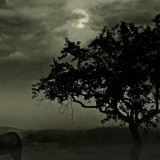The book, Weathered the Storm, follows the trials and tribulations of one youth’s journey. It is a chronological look inside the life of a child who has grown up in the inner-city. This is a glimpse inside one child’s struggles, even though many children from all backgrounds are faced with these same troubling emotions on a daily basis. These struggles the youth is faced with are brought to life by the author in the poems and journals in the book.
In the first page of the book the youthful author gives insight to a better life with the poem A New Day Is Dawning. The poem is over-shadowed with a dark view inside the authors life. The valuable lesson the author is trying to teach is that even though we are all faced with day to day dilemmas and adversity. We should never give up on ourselves because we will have a better day after the seemingly dark days.
As you read through, you may also find the poem, You May Blossom, which is based on the life of a flower. The author’s work comes to symbolize the complications in the daily growing stages that most people experience through their lifetime. It sheds light on the fact that even the most beautiful flower such as a rose is faced with harsh conditions before it blooms. The author demonstrates that the flower only expresses a glow of radiance and beauty after it survives all the adverse conditions it has to experience before the world comes to know the existence of this beautiful rose. It all starts from the beginning stages of the rose’s strong roots right up to the thorns on the roots that exemplify the harsh conditions the rose experiences before it heads into full blooming of its beautiful petals. The author portrays this strong message of survival and of utmost beauty and the adverse growing stages the rose has to go through in order to flourish into a most elegant flower. The author proves that before natural beauty can be seen, you must first deal with the growing stages. Our struggles and the valuable lessons we learn along our journey to becoming mature and showing inner beauty are best represented by the bountiful petals. The youthful author wants the reader to come to the realization and understanding that even despite all the turmoil, these creations can still yield beauty. The author wants us to place ourselves in the root of the rose and to think of ourselves to be as timeless and precious as the vibrant red petals of the rose after it has weathered all its storms. He adds that everyone and all things in life go through heartfelt seasons to reach a stage of beauty. He says this in the last lines of the poem:
So whatever you do maintain a smile
because the temporary showers
you will experience in life
will only last a short while
these showers always bloom flowers
you will experience
small rainstorms in your lifetime
for a reason it’s because you are
experiencing life’s seasons
which is all a matter
of your personal growth
so weather the storm
so the seeds you plant
along life’s paths
may grow
P.S. it’s all for a reason you are becoming seasoned.
The book, Weathered the Storm, also points out the fact and wants the reader to take into consideration how a young child life may become lost on his life’s mission or may even lose part of their soul if he has to be faced with the harsh reality of growing up in a single parent home or in care of a foster family— even more undesirable fate of growing up in the care of a government agency. Which does not educate the youthful author about the foundation of a strong family support system.
The poems, What About a Father, What’s His Name, and Foster Child and Abandoned Ones,
exemplify that even the most innocent child can lose their natural emotions because the child does not feel the ever-so-needed feeling of love. The feeling of love is influential in all aspects of growth. The author reiterates in these three works that we all need the feeling of warmth to grow. Without this basic and essential facet of life, we would all experience hardship and difficulty getting to the next stage of our lives.
The book also cast a bright side and is not all doom and gloom. The author reveals a lighter side to himself when the author expresses chronicled moments when he is loved by others as well as expresses love to himself. Some of these works include My Dearest Friend as well as the work, No Questions Asked. The author expresses the feeling of eternal bliss. The author extends these feelings of love when he expresses compassion in the poems, Lonely Man’s Voice and I Never Cried Like I Cried Today. These two poems relay that not only should we express our emotions, but we should be compassionate and understanding of other’s feelings. We are all faced with misfortune in life. The author is simply stating on these two poems to not be so selfish to think or believe that you are isolated or alone. That there are plenty others who suffer through hardships in this world. The simple lesson in these two works that the author is trying to pass along is to never stop showing compassion towards others because all life struggles are relatable by others.
Weathered the Storm challenges us to relate to the feelings of hardship, hope, love, and faith, and reminds us to stay optimistic during all of life’s valuable lessons. The author believes there is beauty in all human anguishes. He believes that life is not just based off the facet of beauty—that we would not have life itself if we were not faced with harsh conditions as well as sadness and grief. He believes if the two intertwining emotions of happiness and sadness did not meet, then life as we know it, would not exist and we would not gain the knowledge or insight to better understand one another.




